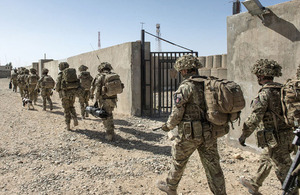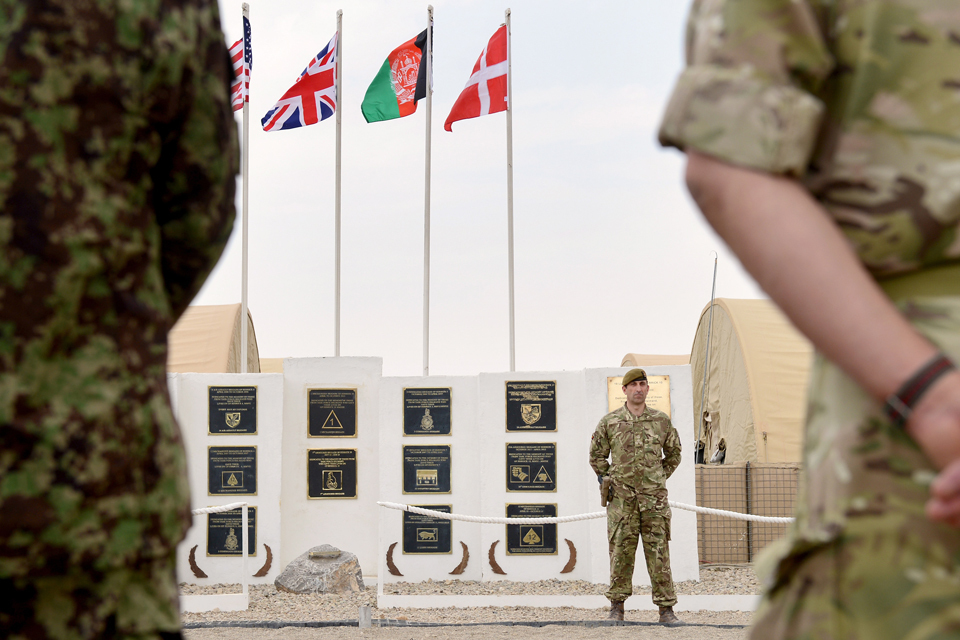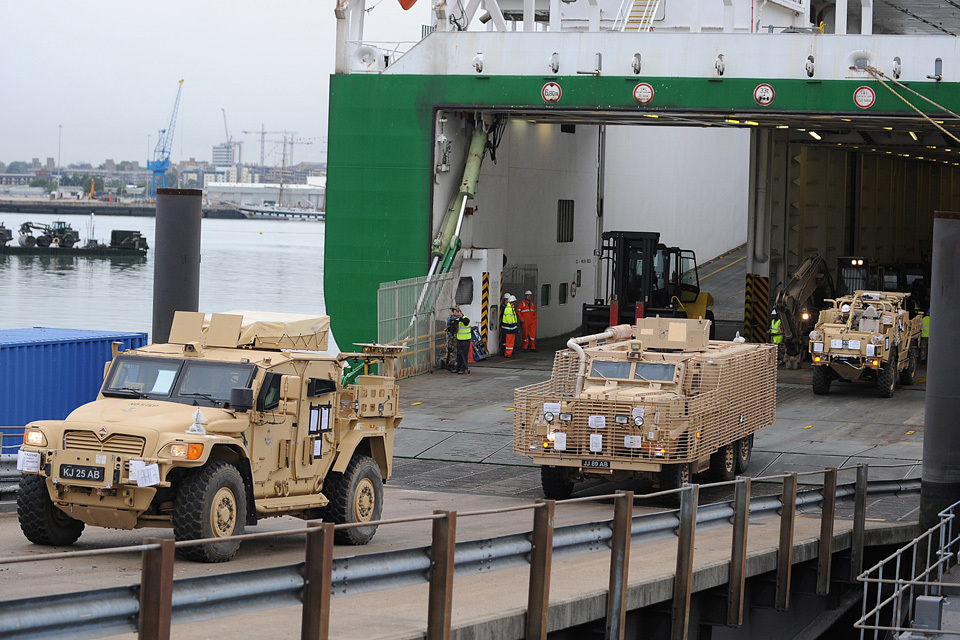Ceremony marks end of Task Force Helmand
After 8 years of front line operations, the UK's military headquarters in Helmand was disbanded yesterday.

British soldiers leaving Main Operating Base Lashkar Gah on 1 March 2014 (library image) [Picture: Corporal Ross Fernie, Crown copyright]
In the latest stage of the ongoing drawdown of UK operations in Afghanistan, the functions of Headquarters Task Force Helmand have been subsumed into the wider US-led Regional Command (South West).
This milestone marks the end of the 16th Task Force Helmand operation for the British-led coalition task force, which has comprised soldiers from the Danish, Estonian, Tongan, Jordanian and Bosnian armed forces.
The Secretary of State for Defence, Philip Hammond, said:
At this important point in the final year of the UK’s lengthy and crucially important combat mission, it is only right to reflect on the significant achievements, and sacrifices, of the past 8 years.
The servicemen and women who have fought under the command of Task Force Helmand have protected the security of the UK and its people, prevented international terrorists from using Afghanistan as a base, and created the conditions for a brighter, more secure and more stable future for the country.
Having relocated from Lashkar Gah to Camp Bastion last year as part of the planned drawdown of British forces in Afghanistan, the control of Task Force Helmand’s area of operations has now been handed over completely.

The ceremony to mark the end of Task Force Helmand [Picture: Corporal Daniel Wiepen, Crown copyright]
Although Task Force Helmand has disbanded, British troops will remain in Camp Bastion throughout 2014, either working in the coalition force under Regional Command (South West) or supporting the redeployment of equipment back to the UK under Joint Force Support (Afghanistan), the UK’s logistical headquarters.
The number of British service personnel in Afghanistan will continue to drop as the operation draws to a close and the Afghan National Security Forces prepare to stand alone without ISAF (International Security Assistance Force) support.
At the ceremony to mark the end of Task Force Helmand, its final commander, Brigadier James Woodham, said:
This is a significant moment in the drawdown of British forces in Afghanistan. It has been an honour to serve as the last commander of Task Force Helmand and command the soldiers of 7th Armoured Brigade, ‘The Desert Rats’, on operations. The Task Force has achieved so much since 2006 and I pay homage to all of those who have served under it.
We are leaving Helmand in a better place and the Afghan National Security Forces are well set to continue to deliver security to the region.
The number of British personnel in Helmand has reduced from a peak of more than 10,000 to its current level as the Afghan National Security Forces have taken the lead for security across the country. The role for the task force has changed from combat operations to advising the Afghan National Security Forces.
Kit redeployment

Redeployed British military vehicles arrive back in the UK from Afghanistan (library image) [Picture: Shane Wilkinson, Crown copyright]
Since the operation began, the UK Ministry of Defence has approved, through the urgent operational requirements process, over £5.8 billion of battle-winning equipment to meet emerging threats in Afghanistan. So far more than 1,578 vehicles and items of major equipment have been redeployed from the front line and are now being made ready for future contingency operations.
And MOD has announced today that a contract worth up to £20 million in the first 2 years has been awarded to Coventry-based Morgan Advanced Materials for post design services for the army’s fleet of Mastiff, Wolfhound and Ridgback vehicles, which are based on the US Cougar vehicles made by Force Protection, as they come back from Afghanistan, to be retained in service so that UK troops will benefit from their capability for years to come.